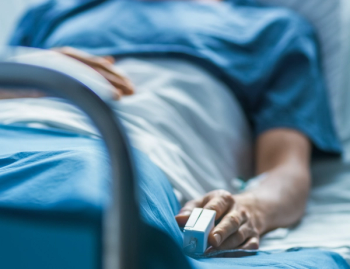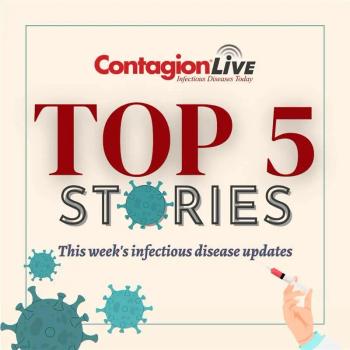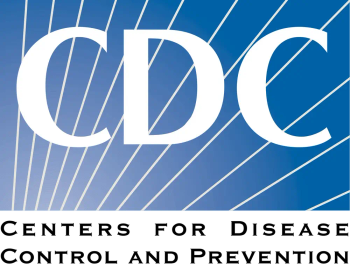
Management of Refractory Mpox in Patients Living with HIV
Timmy Do, PharmD, BCIDP, BCPS, presents case series at MAD-ID 2025 on investigational therapies following tecovirimat failure.
Two patients living with HIV (PLWH) and refractory mpox were treated with a combination of investigational therapies after failing first-line antiviral treatment, according to a case series presented by Timmy Do, PharmD, BCIDP, BCPS, at the MAD-ID 2025 meeting. Both patients, managed at AdventHealth in Orlando, Florida, were severely immunocompromised and required extended-duration regimens supported by the CDC.
The retrospective case series describes two men, one in his 20s and another in his 40s, who presented in 2024 with worsening mpox lesions despite prior courses of oral tecovirimat. Both had CD4 counts below 70 cells/µL and HIV viral loads greater than 1,000 copies/mL at baseline. Disease progression and PCR-confirmed mpox lesions prompted consultation with the CDC and treatment escalation to include agents such as brincidofovir, cidofovir (IV, topical, and intralesional), and vaccinia immune globulin (VIVIG).
“The data that's currently out there for monkeypox is very limited,” said Do, an infectious diseases clinical pharmacist. “Oftentimes when we have these cases, we're consulting the CDC… the two cases that we have in our poster today are very unique, involving extensive therapy, long durations, and different routes of therapy as well.”
Case Summaries
Patient 1, a male in his 20s, was nonadherent with antiretroviral therapy (ART) prior to admission. After failing two courses of oral tecovirimat, he received IV tecovirimat (14 days), oral brincidofovir (three doses), one dose of VIVIG, and re-initiation of ART. By discharge, he had no new lesions, with his CD4 count rising from 18 to 47 cells/µL and viral load dropping from 1,640 to 47 copies/mL.
Patient 2, a male in his 40s, presented with lesion progression despite completing oral tecovirimat and not having initiated ART. He was started on ART and reinitiated on oral tecovirimat, followed by IV cidofovir (four doses), two doses of VIVIG, topical cidofovir, and three intra-lesional cidofovir treatments. Clinical improvement was seen 10 days after the start of intralesional therapy. By discharge, his CD4 count increased from 67 to 361 cells/µL, and viral load declined from over 1 million to 4,400 copies/mL.
“The consideration to escalate beyond [tecovirimat] was pretty much the patient’s response and development of new lesions or lack of improvement,” said Do. “These patients have really poor immune systems, so their body is unable to clear the infections and also taking longer.”
“In both of our cases, they were receiving combination therapy—starting with tecovirimat and then adding cidofovir or brincidofovir—and hoping that it helps the body clear the virus more quickly.”
Both cases required extended treatment courses. Patient 1 received 44 days of tecovirimat (oral and IV), while Patient 2 received 48 days of oral tecovirimat plus adjunctive therapies.
“In these patients, we're treating at least 30 days. That falls in line with the data actually showing that in immunocompromised patients with very low CD4 counts... we’re seeing at least 30 days of treatment before lesions improve,” Do explained.
He noted that current CDC guidelines recommend treating until lesion crusting, which may extend well beyond the 14-day duration previously considered standard. “The current recommendation is 14 days. However, in these situations, we’re having to do more than that… at least 30 days for these patients.”
The cases underscore the importance of interdepartmental coordination and timely access to investigational agents. According to Do, response time and decision-making were key in both cases. “We work very closely with infection prevention to have a protocol in place so that when you identify patients with monkeypox, you're able to efficiently get infectious disease on board, get the drugs quickly… and get pharmacy involved.”
“These are things that we’ve identified and been able to create in place for them, for when we have these patients. Things are flowing very quickly, so we’re not sitting around waiting for hours to appear, like we're unsure of when to start therapy and whatnot.”
The report highlights the clinical challenge of managing refractory mpox in PLWH with profound immunosuppression, as well as the need for flexible, case-by-case escalation protocols involving investigational agents.
“We don’t have a lot of data on who should get aggressive therapy right off the bat,” said Do. “But just trying to see which patient fits in what category and identifying who we can be aggressive with—those things are important for the management of monkeypox.”
Citation:
Do T, Cozad M, Lim L, Nwanyanwu R. Management of Refractory Mpox in Patients Living with HIV/AIDS: A Case Series. Abstract 92. MAD-ID Meeting. May 28–31, 2025. Orlando, FL.
Newsletter
Stay ahead of emerging infectious disease threats with expert insights and breaking research. Subscribe now to get updates delivered straight to your inbox.

















































































































































































































































































